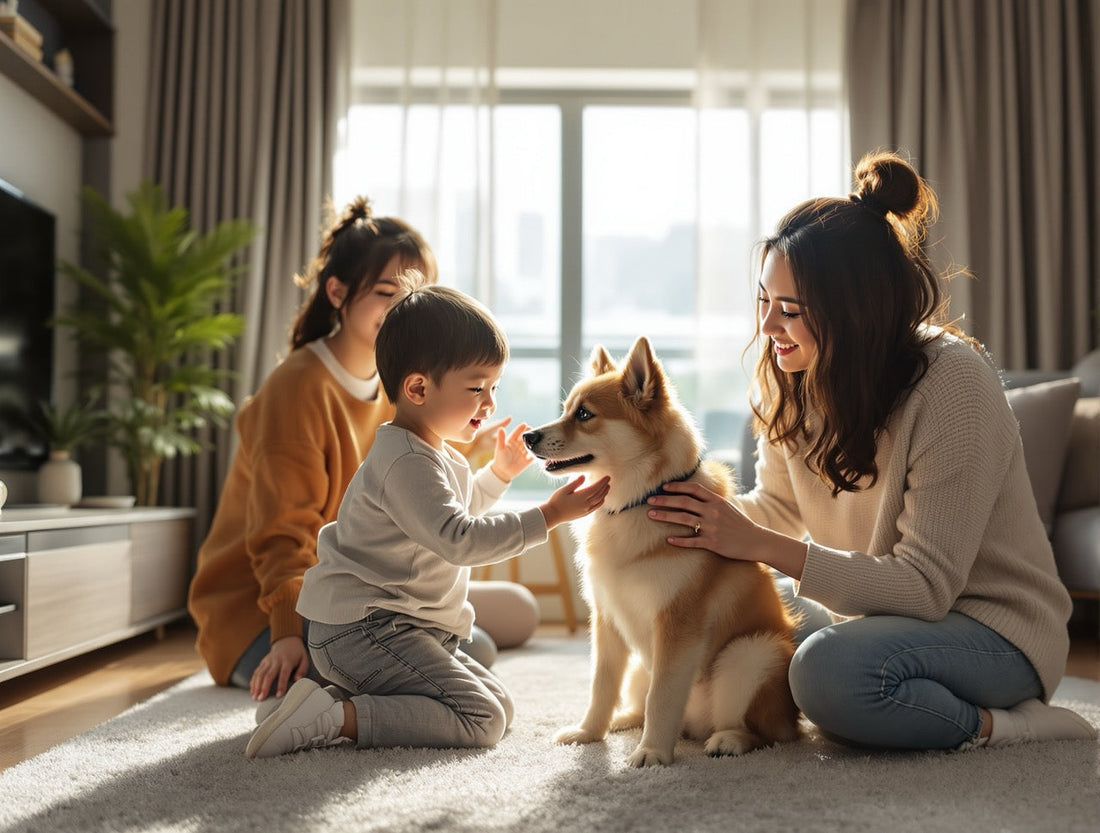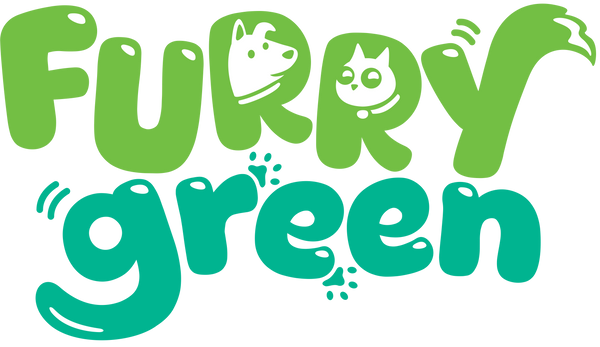
Balancing Small Pets and Young Children: A Hong Kong Family's Guide
Share
A Vet's Guide to Raising Kids and Pets in Hong Kong
For young families in Hong Kong, raising children alongside small pets can bring joy, companionship, and lasting memories. At the same time, it requires careful management to ensure both children and pets feel safe and respected. As a veterinary professional, I can assure you that with patience, structure, and a thoughtful approach, children and pets can grow into each other’s most trusted companions.
Key Takeaways
- Always supervise: Never leave small children alone with pets, regardless of breed or temperament.
- Respect boundaries: Provide safe spaces for both children and pets.
- Choose wisely: Match your family’s lifestyle and space to the right pet’s needs.
The Reality of Pets and Young Children

Beyond the Instagram Moments
While social media often shows picture-perfect cuddles between toddlers and puppies, real life is more nuanced. Young children lack impulse control--they may grab tails, pull ears, or squeal suddenly. Even the gentlest pet can react defensively if startled.
Think of yourself as a translator between two species: toddlers who don’t yet understand boundaries, and pets who communicate discomfort through body language rather than words. Guiding both sides prevents misunderstandings and builds trust.
Building Positive Relationships

The goal isn’t separation--it’s safe, positive interactions. Start with short, supervised sessions. Teach children:
- Offer an open palm for sniffing.
- Use slow, gentle strokes.
- Never disturb pets while eating, sleeping, or hiding.
- Each positive encounter lays the foundation for mutual respect.
Choosing the Right Pet for Your Family

Energy Levels and Temperament
Busy families with toddlers may find calmer breeds (e.g., Cavalier King Charles Spaniel, Ragdoll cats) easier to integrate than high-energy ones (like Jack Russell Terriers).
Space Considerations
Hong Kong apartments are compact. Medium-sized dogs may feel cramped, while cats often adapt well by retreating to vertical spaces such as cat trees. Very small pets (hamsters, birds) are more vulnerable and often unsuitable for households with toddlers.
Allergy-Friendly Options in Hong Kong
In dense cities like Hong Kong, allergies are common. While no breed is 100% hypoallergenic, some small breeds produce fewer allergens and shed less--making them better suited for sensitive families.
Top Hypoallergenic Small Breeds:
- Toy / Miniature Poodle: Highly intelligent, non-shedding coats. Popular in Hong Kong apartments.
- Bichon Frise : Adaptable, cheerful, and excellent with children.
- Maltese: Affectionate and playful, though grooming is essential.
- Shih Tzu: Low-shedding, family-friendly, but may need extra healthcare.
- Miniature Schnauzer: Wiry coats handle humidity well; spirited yet manageable.
- Yorkshire Terrier: Fine, silky hair instead of fur; small, portable, and affectionate.
What Families Should Remember:
- Grooming is non-negotiable. Even hypoallergenic breeds need regular brushing and professional grooming to keep allergens low.
- Fit matters most. A calm dog mismatched with an energetic family--or vice versa--will create stress regardless of coat type.
Creating Harmony in Limited Space
Safe zones: A crate, cat tree, or quiet room for pets; a pet-free play corner for children.
Routine matters: Feeding, walks, and rest at consistent times reduce stress.
Nutrition counts: Balanced diets support stable energy and mood. Gently-cooked meals from trusted providers like Furry Green can make a significant difference.
Teaching Responsibility Gradually
Assign small, age-appropriate tasks:
- Age 3: Help pour kibble (with supervision).
- Age 5: Assist with brushing or handing out treats.
These moments teach empathy and build a strong child-pet bond.
Practical Management Strategies
- Recognize pet stress signals: Yawning, lip licking, swishing tails, or hiding. Teach kids that this means “give me space.”
- Hygiene: Handwashing after handling pets, and keeping feeding areas separate from play zones, protects children’s health.
- Managing excitement: Encourage calm greetings and “gentle hands, quiet voices.” Reward both kids and pets for positive behavior.
Troubleshooting Common Challenges
- Jealousy: Maintain pet routines to reduce feelings of displacement, and explain to children that everyone in the family needs care.
- Sleep disruptions: Use pet gates to manage nighttime noise.
- Feeding safety: Keep bowls out of reach--both to avoid guarding behavior and to prevent children from touching pet food.
Final Thoughts
Raising children and pets together in Hong Kong takes planning, patience, and consistency. With safe boundaries, positive interactions, and thoughtful pet choices--including hypoallergenic breeds for allergy-prone families--children can grow up with loyal companions who enrich their emotional development.
Start slowly, supervise always, and celebrate small successes. Over time, these efforts create not just harmony but deep, lifelong bonds.
Join the Furry Green Family!
Get expert tips, special offers, and heartwarming stories delivered to your inbox.
Frequently Asked Questions
What are the best low-allergy small dogs for Hong Kong families?
For families in Hong Kong concerned about allergies, several small breeds are excellent choices. These include Toy or Miniature Poodles, Bichon Frise, Maltese, Shih Tzu, and Miniature Schnauzers. While no dog is 100% hypoallergenic, these breeds shed less and produce fewer allergens, but they require regular grooming to maintain their coats and minimize dander.
How can I create a safe environment for both my child and pet in a small apartment?
In a compact living space, creating 'safe zones' is crucial. Designate a pet-free play corner for your child and a separate, quiet space for your pet, like a crate or cat tree, where they can retreat and feel secure. Always supervise interactions and teach children to respect the pet's space, especially during eating or sleeping.
At what age can children start helping with pet care?
Children can begin helping with pet care at a young age with age-appropriate tasks. A 3-year-old can help pour kibble into a bowl with supervision, while a 5-year-old can assist with gentle brushing or handing out treats. These small responsibilities teach empathy, responsibility, and help build a strong, positive bond between the child and the pet.
References
- American Academy of Pediatrics. Pets and Children Safety Guidelines. 2022.
- American Kennel Club (AKC). Hypoallergenic Dog Breeds.
- Hong Kong SPCA. Pet Ownership Advice for Families with Children.
- Journal of Pediatric Nursing. “The Benefits and Risks of Child-Pet Interaction.” 2021.
